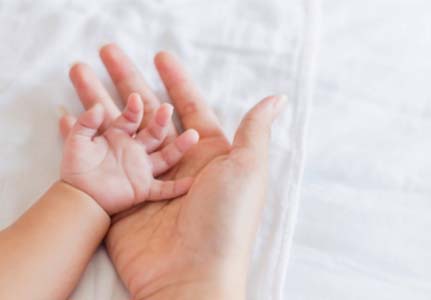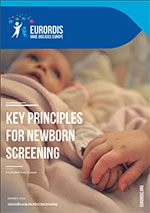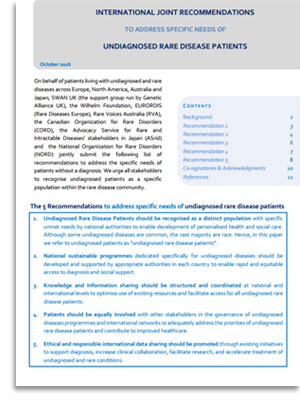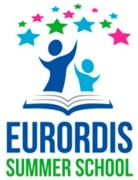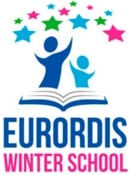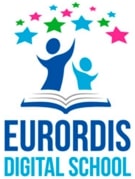Diagnosis
Why is diagnosis a priority for people living with a rare disease?
A diagnosis can serve as the key to unlocking access to appropriate medical and social care. Getting an accurate diagnosis even when there is no treatment provides the opportunity for people living with a rare disease and their families to plan their care and future.
In situations where diseases are inherited, some families have several affected siblings. For these families, the absence of a diagnosis increases the risk and worry of having another child suffering from the same undiagnosed condition.
“If you have a rare disease, your chances of being diagnosed often depend on where you are born. This is why I am part of the EURORDIS Newborn Screening Working Group. I want to contribute to improving newborn screening programmes and earlier, accurate diagnosis of rare diseases.”
Eduardo López, President, Spanish Lysosomal Acid Lipase Deficiency Patient Organisation (AELALD)
About diagnosis
At a glance: related topics
Some people live for months, years or their entire lives with an undiagnosed condition. They face a diagnostic odyssey. In addition, misdiagnosis can result in inappropriate treatment and care options.
Living with an undiagnosed disease can be extremely challenging. Patients and their families experience heartache and stress while waiting or searching for a diagnosis, compounding feelings of isolation and exclusion that worsen with the chaotic journey through numerous referrals, investigations and disease evolutions. Genetic counselling is usually offered to families when or after they receive an accurate genetic diagnosis, to support them when processing the information and explain the implications.
There are several reasons why patients are undiagnosed:
- ‘Not yet diagnosed’ refers to a patient whose disease has not been diagnosed because the patient has not been referred to the appropriate clinician due to common, misleading symptoms, or an unusual clinical presentation of a known rare condition.
- ‘Undiagnosed’ (Syndromes Without a Name or SWAN) refers to a disease for which a diagnostic test is not yet available; the disease has not been characterised and the cause is not yet identified. This patient can also be misdiagnosed as his/her condition can be mistaken for others. These conditions are also likely to be rare.
A major contributing factor in the length of a patient’s ‘diagnostic odyssey’ is often the speed and efficiency at which a patient can move from primary healthcare and general practitioners into more specialised care centres (ideally a rare disease centre of expertise) with expertise in recognising the patient’s presentation, symptom and family history. The European Reference Networks connect such centres of expertise across Europe and therefore facilitate patients’ access to timely diagnosis.
Unprecedented and fast developments in health and scientific technologies have also opened up hope for the diagnosis field. Next generation sequencing (NGS), an umbrella term including whole exome sequencing (WES) and whole genome sequencing (WGS), as well as technologies being built using artificial intelligence, are revolutionising diagnostic research. Advocacy efforts in the undiagnosed rare disease community are highly focused on faster and wiser access to these technologies, which have yet to be fully integrated into healthcare systems across Europe
There is also a lot of work being done in several European countries to increase the number of diseases included in newborn screening programmes as this can directly lead to earlier diagnosis of rare diseases with approved treatments and therapies.
EURORDIS objectives in the area of diagnosis:
- Objective one: Advocate for improved access to accurate rare disease diagnosis.
- Objective two: Engage patient representatives in the development of research and new technologies/ services that can improve diagnosis.
- Objective three: Advocate for equity of patients’ access to next generation sequencing across Europe.
- Objective four: Advocate to increase the number of rare disease screened within newborn screening (NBS) programmes and more equitable access to these NBS programmes across Europe.
Our work
Advocate
In line with the goal of IRDiRC (the International Rare Diseases Research Consortium) – “all patients coming to medical attention with a suspected rare disease will be diagnosed within one year if their disorder is known in the medical literature; all currently undiagnosable individuals will enter a globally coordinated diagnostic and research pipeline” – EURORDIS advocates for timely access to improved diagnosis for people living with a rare disease.
We have initiated and are involved in numerous initiatives to serve this goal:
- EURORDIS is a core member of the governance and operating committees within the European Joint Programme on Rare Diseases, which aims to create an ecosystem to improve coordination in rare disease research in Europe, including the development of and access to diagnosis tools.
- EURORDIS co-chairs the Global Commission to End the Diagnostic Odyssey for Children with a Rare Disease, a multi-disciplinary group of experts that has developed an actionable roadmap to guide the rare disease field in shortening the diagnostic odyssey.
- In 2019, EURORDIS created the Newborn Screening Working Group, including but not restricted to patient representatives. The Working Group reviews current policy and practice in the newborn screening (NBS) programmes in order to develop recommendations for harmonious adoption of NBS programmes across EU Member States.
- The Rare 2030 Foresight Study, led by EURORDIS, will conclude in a set of recommendations on the future of rare disease policy, which will in part set out how to improve access to accurate, timely diagnosis.
- In 2016, EURORDIS and several other organisations published the International Joint Recommendations to Address Specific Needs of Undiagnosed Rare Disease Patients.
- EURORDIS patient representatives in the previous EU Committee of Experts on Rare Diseases contributed to a 2013 opinion on potential areas for European collaboration in newborn screening. Patient representatives in the previous Commission Expert Group on Rare Diseases also then contributed to the 2015 Recommendation on cross-border genetic testing of rare diseases in the EU.
- In 2009 EURORDIS published the The Voice of 12,000 Patients, Experiences & Expectations of Rare Disease Patients on Diagnosis and Care in Europe, a report based on the EurordisCare2 and EurordisCare3 surveys, which was created as information and advocacy tool for patients, patient organisations, health professionals and health authorities.
Partner
Solve-RD is a research project funded by the European Commission to solve large numbers of rare diseases. Within the project, EURORDIS created a Community Engagement Task Force (CETF), which aims to create a united and engaged multi-stakeholder community of patients, scientists and clinicians committed to improving diagnosis and care of ultra-rare diseases and supporting the needs of the undiagnosed community.
Through the CETF, EURORDIS supports and facilitates engagement of stakeholders within, and across, initiatives and networks in the field of diagnosis at European and international levels, including:
- The Undiagnosed Diseases Network International (UDNI), which brings clinicians, researchers, genetic counsellors, and other medical professionals from around the world together to collaborate on diagnosing the most difficult and intractable cases. To guarantee patient representation in the project, NORD, EURORDIS and the Wilhelm Foundation developed a patient engagement membership option so that patient organisations can join the UDNI;
- The Global Commission to End the Diagnostic Odyssey for Children with a Rare Disease; and
- SWAN Europe, a coalition of groups, organisations and support networks working with families and/or patients affected by syndromes without a name and/or undiagnosed genetic conditions. EURORDIS is a member of SWAN Europe. Member organisations of SWAN Europe support the International Joint Recommendations to address specific needs of undiagnosed rare disease patients and bring recognition to this group as a distinct community.
By connecting researchers and clinicians through European Reference Networks, the hope is to facilitate access to timely diagnosis across Europe. ERNs facilitate virtual medical consultations on cases that are difficult to diagnose. EURORDIS played a key role in the creation of the ERNs and plays a key role in the engagement of the patients in the ERNs through the European Patient Advocacy Groups (ePAGs).
Empower
Within the scope of the Solve-RD project, EURORDIS developed the EURORDIS Winter School on Scientific Innovation and Translational Research, which empowers patient advocates with knowledge on the rare disease research environment, genetics, diagnosis research and state of play in diagnosis, data sharing and gene therapies.
As part of the European Joint Programme on Rare Diseases, EURORDIS also facilitates the participation of patient representatives in trainings on registries (the International Summer School on Rare Disease Registries, organised by the ISS) and leadership skills (the EURORDIS Leadership School).
How you and your patient organisation can make a difference in improving diagnosis?
Patients can advocate for the sharing of patients’ genetic data and clinical information so that researchers can match patients with very rare genetic variants and therefore confirm a diagnosis. You can also advocate for wide implementation of next-generation sequencing within your health systems to improve diagnosis. To gain knowledge on the processes around diagnosing a rare disease so that they can influence change, patient advocates can also participate in the EURORDIS Winter School on Scientific Innovation and Translational Research.

